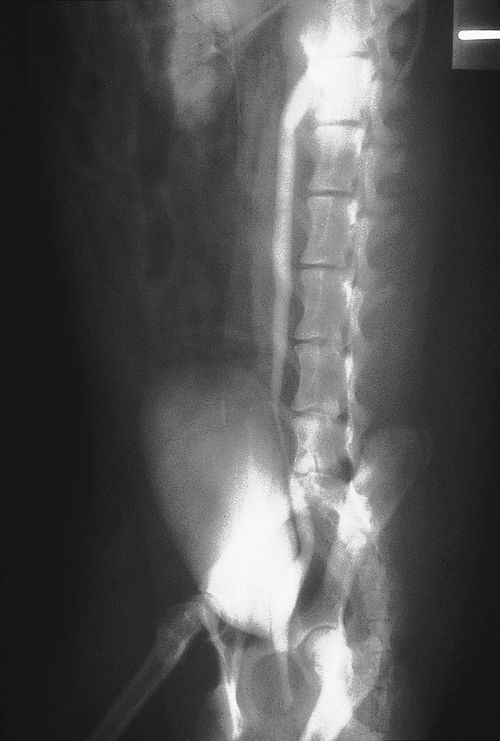Difference between revisions of "Small Animal Soft Tissue Surgery Q&A 13"
Ggaitskell (talk | contribs) |
|||
| Line 3: | Line 3: | ||
<br /> | <br /> | ||
| − | '''This is a one-year-old, female | + | '''This is a one-year-old, female Terrier mixbreed presented for intermittent dribbling since its acquisition at three months of age. This dog periodically voids the bladder normally.''' |
<br /> | <br /> | ||
Revision as of 08:41, 19 October 2011
This is a one-year-old, female Terrier mixbreed presented for intermittent dribbling since its acquisition at three months of age. This dog periodically voids the bladder normally.
| Question | Answer | Article | |
| What diagnosis is suggested by the contrast study? | The excretory urogram shows ureteral ectopia; here the dilated left ureter drains into the urethra. It is a congenital disorder where one (70–80% of dogs) or both ureters (most cats) terminate and drain at a site other than the urinary bladder, most often in the urethra or vagina. The condition occurs most frequently in Siberian Huskies, Newfoundlands, Terriers, Golden and Labrador Retrievers and Toy Poodles; the mode of inheritance is unknown. |
[[|Link to Article]] | |
| What are five morphologic variations of this anatomic anomaly? | The five morphologic variations of this anatomic anomaly are:
|
[[|Link to Article]] | |
| What are the methods of choice for assessing the ureteral pathway and its termination? | An excretory urogram in conjunction with pneumocystogram is useful to assess the presence or absence of an ectopic ureter. Vagino-urethrography is also useful for evaluating the termination of the ureter. Radiography cannot be used to identify the morphologic type of ectopic ureter. |
[[|Link to Article]] | |
